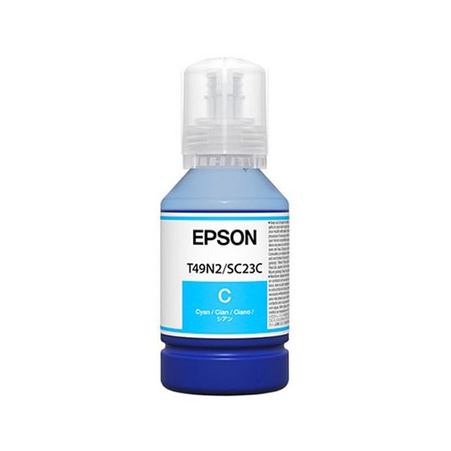Add products by adding codes
Sublimation ink - what is it and how does it work?

Everyone once had a mug that accompanied them in an unchanging form for years. Despite numerous washes in the dishwasher and daily use, the pattern on it has remained as intense as it was on the first day. This is the magic of sublimation - prints from this method do not rub off regardless of the passage of time. This works by means of special inks, which under the influence of high temperature turn into a gas and penetrate into the surface of the material. This ensures that the prints are water resistant and do not fade as quickly when exposed to sunlight. This method is often used in the apparel, advertising or personalized gadgets industry. In this article, we will explain how sublimation ink works and how it differs from regular inks. We encourage you to read!
Table of contents
- Sublimation ink - what it is?
- How sublimation ink differs from regular ink?
- What materials can be printed on with sublimation ink?
Sublimation ink - what it is?
The special type of ink used in thermal transfer printing technology is called sublimation ink. What it is and what properties it has? Its unique feature is its ability to change its state of aggregation without passing through a liquid phase. The ink got its name from this very process - sublimation. At high temperature, under pressure, the ink goes directly from solid to gas, penetrating into the structure of the material and creating a permanent, resistant print.
The sublimation process is carried out under special conditions - at high temperature (usually about. 180-200°C) and under appropriate pressure. These parameters allow the transfer of the dye into the substrate. As a result, the resulting print remains resistant to abrasion and external factors, m.in. uV radiation or moisture.
Sublimation ink is widely used in thermal transfer printing, especially in the advertising industry. It is used to personalize sportswear, T-shirts, mugs, mouse pads or flags. With sublimation technology, you can get full-color, high-quality prints with photographic accuracy.
How sublimation ink differs from regular ink?
Sublimation ink differs from the ordinary primarily in its chemical components. Standard inks are water- or solvent-based and remain on the surface of the media. In turn sublimation ink contains special dyes that under the influence of high temperature turn into gas and penetrate into the structure of the substrate. That's why prints made with this method are extremely resistant to abrasion, water and UV radiation, which means they won't fade even after many washings or exposure to the sun. Unlike ordinary printing, where the ink remains on the surface, in sublimation the dye literally becomes part of the material. There is no "overprinted layer" effect, as the pattern penetrates directly into the plastic, leaving a smooth finish. Sublimation ink vs. regular ink are therefore two completely different things that operate on different principles.
What materials can be printed on with sublimation ink?
Sublimation ink works best on materials made of polyester and on surfaces covered with a special polyester coating. This is because the process of this printing requires that the color can penetrate the structure of the material, which would not be possible with natural fabrics. The dye is unable to bond with the texture of the cotton, for example, so the print would be washed out quickly. For this reason, alternative printing techniques are used for such plastics, such as thermal transfer using special transfer papers or DTG. Although the sublimation method can be widely used for printing on mugs, sportswear and various advertising gadgets.
Sublimation technology is developing rapidly, and better and better inks and equipment are making the process even more efficient. It is worth investing in gadgets printed with this method if you care about high quality and durability, as well as personalization. Although the technology has some limitations, especially in terms of the materials on which it can be printed, its advantages in many cases far outweigh the following. Thanks to sublimation it is possible to obtain permanent prints, making it one of the most attractive methods available on the market.
